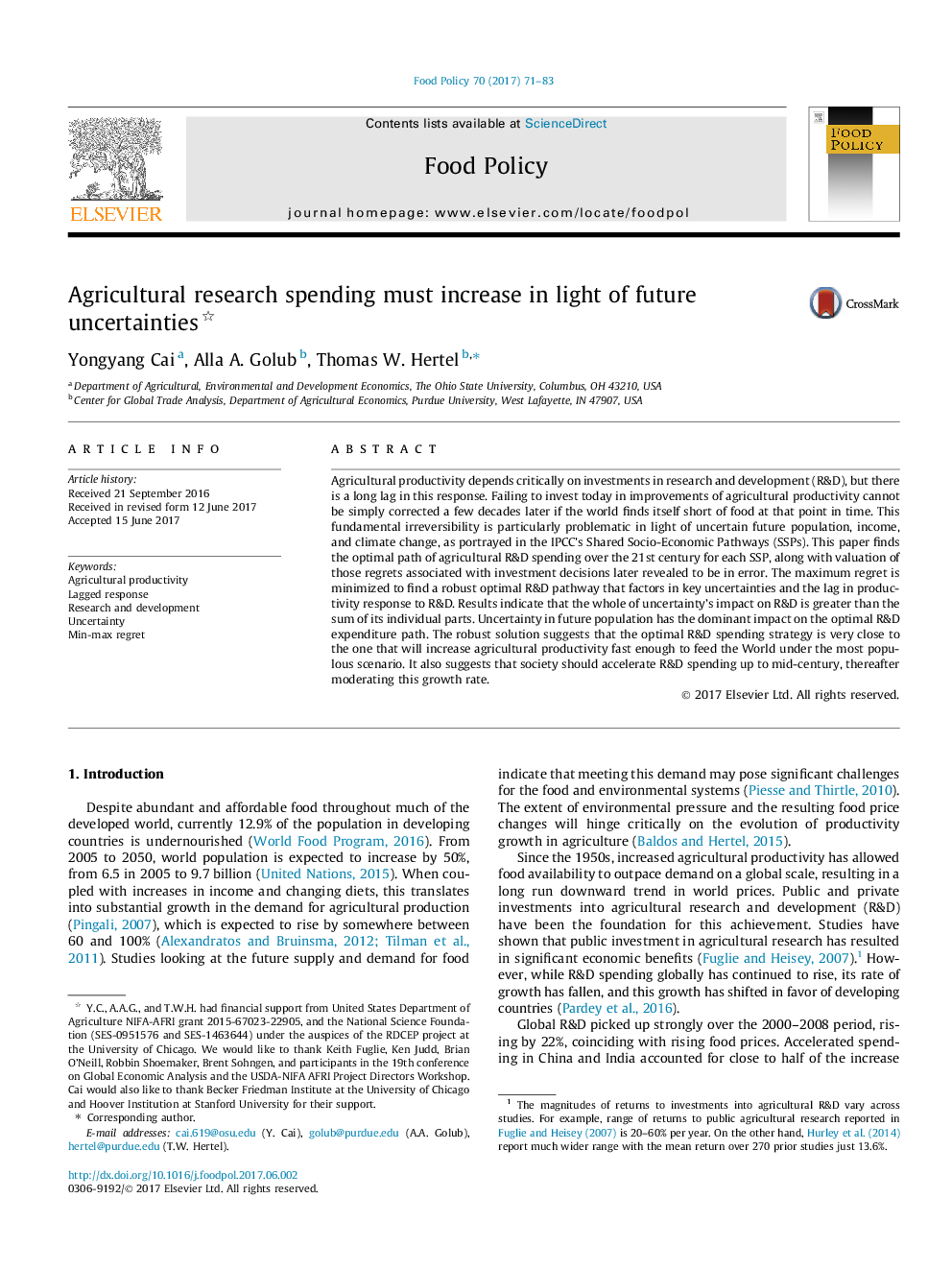ترجمه فارسی عنوان مقاله
هزینه های تحقیقاتی کشاورزی باید با توجه به عدم قطعیت های آینده افزایش یابد
عنوان انگلیسی
Agricultural research spending must increase in light of future uncertainties
| کد مقاله | سال انتشار | تعداد صفحات مقاله انگلیسی |
|---|---|---|
| 96431 | 2017 | 13 صفحه PDF |
منبع

Publisher : Elsevier - Science Direct (الزویر - ساینس دایرکت)
Journal : Food Policy, Volume 70, July 2017, Pages 71-83
ترجمه کلمات کلیدی
بهره وری کشاورزی، پاسخ گمشده، تحقیق و توسعه، عدم قطعیت، حداقل حداکثر پشیمانی،
کلمات کلیدی انگلیسی
Agricultural productivity; Lagged response; Research and development; Uncertainty; Min-max regret;

